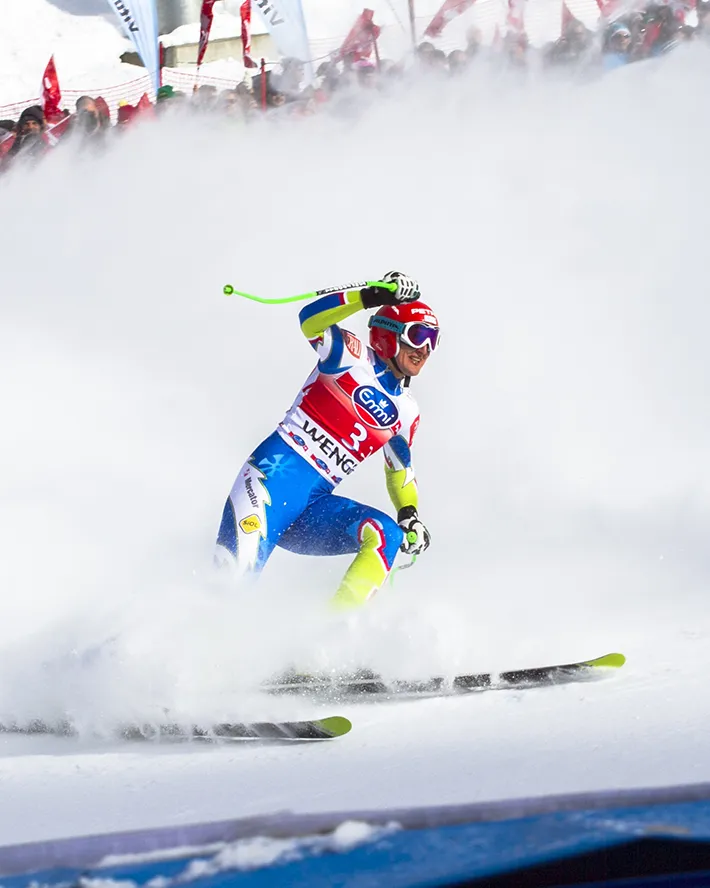Ski racing has a rich history dating back to the early 20th century, when the sport first began to gain popularity in Europe and North America. Over the years, many legendary ski racers have emerged, pushing the boundaries of what was thought to be possible and leaving a lasting impact on the sport. In this blog post, we will take a look at some of the pioneers who changed the game and helped shape the sport of ski racing into what it is today.
Improve your skiing with off mountain training
Let's face it, there's nothing more effective than actually skiing mile upon mile on beautiful crisp midwinter snow to improve your skiing. However, that doesn't mean that there's nothing you can do to benefit your skiing when you're not out in the mountains shredding the real stuff. Here are some practical tips as to what you can do at home, summer or winter, to make your next ski trip even better and become the ski god that you know you can be.
1. Keep skiing!
Just because you're not in the mountains doesn't mean that you have to stop skiing! It's perfectly possible to ski on over 100 days a year in the UK for about the price of one week's alpine skiing- if you're willing to put in a bit of effort at a dry slope or snowdome. Imagine how much you could improve with that much extra skiing! Dry slopes are the cheapest option and we're very fortunate in the UK to have a fairly comprehensive network of these around the country. For those who haven't been to one before, dry slopes are made up of plastic matting of two main types- DENDIX, which consists of plastic bristles formed in a honeycomb pattern, and snowflex, which is laid more like a continuous carpet. I've mostly skied on DENDIX, which is fun once you make the adjustment from snow (I usually describe it as "slow ice" in quality, as it's not very grippy and not very quick). I actually think skiing on DENDIX is very good for your skiing, because it tends to accentuate any technical/balance errors, so I'm a big fan. I have to be honest and say that it's pretty abrasive to fall on, and the honeycomb is prone to catching fingers etc when you fall, so gloves are essential. Although I've never tried it, Snowflex is said to be more like skiing on snow, and more comfortable to fall on. Indoor snow obviously speaks for itself, and can be quite like the real thing. Wrap up warm, just like for real skiing, because it's chilly inside these giant fridges. Typically the artificial dry or snow slopes are 100-200m, although the Midlothian dry slope at Hillend near Edinburgh is a monster at 400m long. Price-wise, definitely dry slopes are cheaper than indoor snow. Typically I pay about £10 for two hours at my local dry slope, whereas snow slopes can be two or three times that price. Here's a link that will take you to a list of UK dry and indoor snow slopes.
2. Improve your balance
We all know that balance is a critical aspect of skiing, and like any neurological/motor skill it can be improved with training. I was really struck when watching the video below, of American ski racer Mikaela Shiffrin's (somewhat of a hero of mine because of her dedication and obvious love of the sport) dry land training summer programme, at how much balance training it incorporated. A lot of the stuff that she was doing doesn't need much in the way of equipment and you could easily set it up in your own garden. One item that's highly recommended to help this training is a balance board or wobble board- I've tried them- easy with a roller underneath, much harder with a ball. I notice Mikaela's using one and juggling at the same time! I reckon you could make something like that fairly easily, and that 10 or 15 minutes a day would start to make a massive difference to your balance.
3. Get fit, particularly in your core.
Skiing is an athletic activity, and good, dynamic skiing can be very physically intense. Think of the effort that needs to go in to all of those quick twisting movements during a bump run, or the forces that you have to resist when you're carving a turn at higher speeds (which feels to me a bit like doing squats down the mountain). While many traditional ski exercises focus on developing leg, and particularly thigh strength, it's easy to overlook the importance of core strength. But the core is absolutely crucial in being able to control and manage the movements that you need in pretty much all types of dynamic skiing. You need a strong core to keep good skiing posture when you're subjected to the high g-forces of high speed carving, or to keep your centre as a stable platform while you're zipping your way down the bumps. The video below shows a really quick, but fantastically effective core strength workout. I reckon if you do this 2 or 3 times a week you'll definitely see improvements in your skiing.
4. Improve your range of movement in the key skiing joints.
Guys, this is about flexibility, I have to say not my strong point, but something that I've been steadily working on. The key skiing joints are the ankles, knees and hips. Most people have a pretty good range of movement and their knees, but ankle and hip joints can be a real problem and I reckon that most skiers stand to benefit from stretches to increase ankle flexion (helping to "bend ze knees" and pressure the front of the boot) and the range of hip rotation. I've pasted a couple of videos below, one on calf stretching and the other on hip flexibility. I think building in this type of stretching to your routine will help a lot with your skiing biomechanics the next time you're on the slopes.
Have fun, but remember, don't over do it and stop if anything feels painful or not right.


